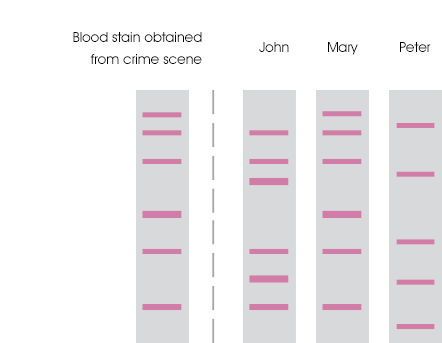

Revision Questions : DNA fingerprinting
Question 1: Which of the following is/are the reason(s) of using VNTRs in DNA fingerprinting?
- The number of repetitive sequences at each VNTR locus shows polymorphism.
- The DNA at VNTR loci is more stable than coding DNA.
- The DNA sequence of each tandem repeat at a VNTR locus shows polymorphism.
-
CORRECT! Different number of repetitive sequences gives different lengths of DNA fragments after digestion by restriction enzyme, which allows one to generate a DNA fingerprint.
-
INCORRECT! There is no difference in the stability of DNA at coding or non-coding region.
-
INCORRECT! There is no difference in the stability of DNA at coding or non-coding region.
-
INCORRECT! There is no difference in the stability of DNA at coding or non-coding region. The number but not the DNA sequence of VNTRs shows polymorphism.

